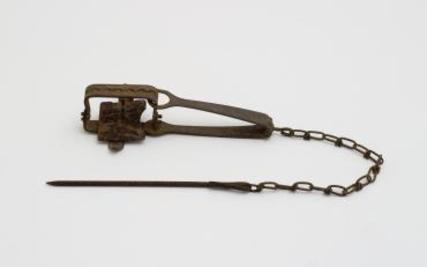Rabbits
As I have mentioned elsewhere, my friend Bob Piper had a .22 rifle we mostly used it for target shooting but we also tried our hand at shooting rabbits. I had an air rifle but it was useless for hunting. The rabbits were hunted by one and all and were gun-shy (unlike today’s bold bunnies) and difficult to hunt as they have excellent hearing and you had to be down-wind.
Later, in high school, when I was in the School Cadets, I became better at this and actually hit them. Then they needed to be skinned, cleaned and cooked. In the bush the best way to cook them is to first sear the pieces in a billy with some butter then add a can of three-bean-mix, a clove of garlic, plus water salt and pepper to taste.
There were lots of feral rabbits around and at different times there was a bounty on them. Myxomatosis introduced in 1950 knocked the population back but they often bounced back.
In the 50’s there were still many men in Sydney who made a living, or supplemented their income, as ‘Rabbitohs’.
They would walk along the street calling ‘Rabbitoh’ and mothers would buy one or two for the evening meal. My mother cooked them in the French way; possibly learnt in Canada; delicious.
Rabbitohs seldom shot the rabbits as it is too difficult and slow. Instead they used rabbit traps or wire snares.
Traps consist of spring loaded steel jaws held open by a simple trigger that is released by an animal stepping on the footplate. An attached chain connects to a steel stake that is hammered into the ground. As children we needed to be aware of them. They were dangerous to small or bare feet and could cut off an exploratory finger.

A typical Rabbit Trap with the jaws closed - not yet set.
They were set by pressing down on the leaf spring with a foot or knee then closing the catch over one jaw.
They would be left in the rabbit-runs lightly covered with leaves or grass. A very light press on the footplate set them off
Picture source (and more information): About NSW
Like similar traps, designed to catch animals by the leg, they are now considered cruel and are banned in most places. The last such trap was manufactured in Australia in 1960; and so the Rabbitoh is no more; except for South Sydney Rugby League Team.
Since that time rabbit meat has gone up-market and is now most often found in small portions on the plates of expensive restaurants.
In 1995 rabbit Calicivirus was released in Australia and numbers were again decimated. But some rabbits persist and can still be seen, now quite unafraid, around Mosman parklands. There is even a large tame rabbit that grazes on the grass near the ferry wharf.
